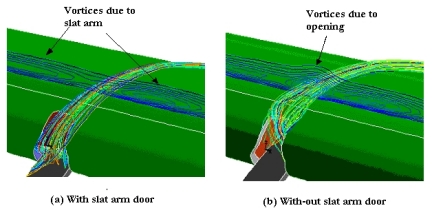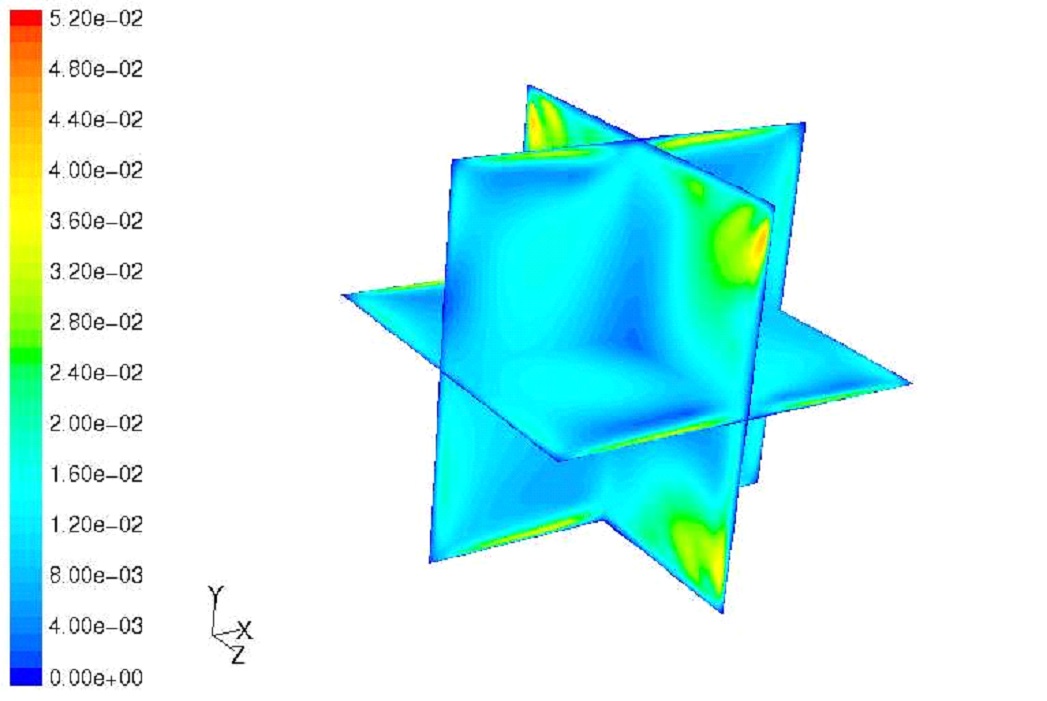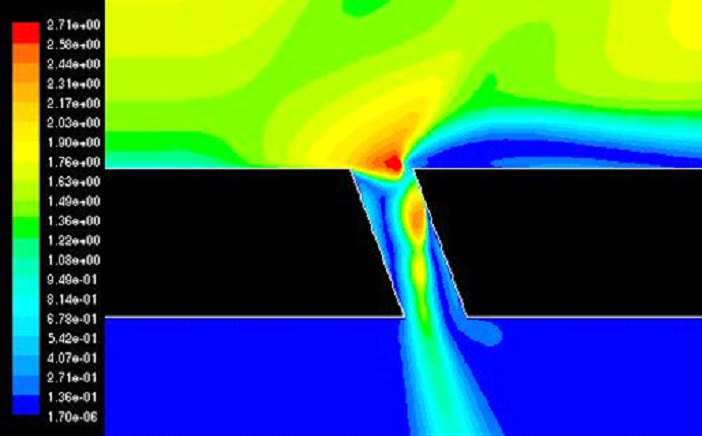Research Projects
Slat Arm Effects on the Performance of Commercial Aircraft Wings:
The slat surfaces of aircraft wings are used at take-off and landing to provide additional lift. While the slats are deployed, doors cover the cavity inside the wing that houses the slat arm elements. Aircraft manufacturers such as Boeing, spend significant resources constructing such devices with little hard evidence as to its benefits in terms of reduced drag and reduced contamination of internal wing elements. This project involves the numerical modeling in three dimensions of a section of the wing containing a deployed slat and slat door. The objective is to quantify the drag effects and interior wing contamination by convected particles.

Assessment of Turbulence Model Performance in Buoyancy Driven Cavity Flows:
Flows: This is a collaborative effort with Prof. Wey Leong to determine the performance of several commonly used turbulence models for buoyancy driven heat transfer within a sealed cavity. Average Nusselt numbers for a number of numerical models are compared with various grid densities and cavity configurations. Performance of each turbulence model is assessed through comparison to experimentally determined values. A number of commercial processes that are dependent on convective processes can be modeled more accurately if greater insight is provided into turbulent heat transfer.

Velocity contours in convective cavity flow
Hypersonic Air Inlets; Viscous Effects and Transient Starting:
The use of air breathing propulsion at hypersonic speeds offers the potential for substantial cost reduction for low earth orbit transport. Hypersonic air inlets can suffer from poor performance if the effects of viscosity and transient starting phenomena are not thoroughly understood. The effects of viscosity are assessed through numerical modeling of the inlet portion of a hypersonic air breathing propulsion system. Viscosity will increase stagnation pressure losses and may cause flow separation. Viscous effects are examined on bleed holes used to start hypersonic inlets. Modeling of transient phenomena for inviscid flow starting has shown that bleed holes offer an effective means of starting hypersonic inlets even in off design conditions. The transient starting studies are being extended to explore shock wave-boundary layer interaction.

Mach number contours near a supersonic bleed hole with magnetic field induced flow impedance
Ducted fan propulsion systems for electric aerial vehicles:
Ducted fan propulsion systems have been shown to offer improved propulsion efficiency at low subsonic Mach number flight speeds. At higher speeds, the additional drag created by the duct due to skin friction and form drag offset any improvements in propulsive efficiency of the fan blades. This research initiative has focused on pushing the speed limitations of an efficient ducted fan through optimization of the duct shape and fan blade configuration.

Ducted fan configuration optimized for propulsive efficiency
Optimization of Wind Augmenters for Urban Power Generation:
This study utilized computational fluid dynamics to analyze building shapes to optimize wind turbine power production. Results indicate an increase in power of up to approximately 4 − 8 times compared to that for the undisturbed free stream flow. Furthermore, a porous medium was used to simulate the momentum loss due to the presence of the wind turbine. The trends remained similar despite the momentum loss caused by the presence of the wind turbine. The porous medium results showed an increase of power approximately 2 − 3 times. The study extended the geometry to 3D to support the 2D results. The test case indicated the 3D results had a higher performance in comparison to 2D due to the 3D interactions of the vortex shedding dampening the variance of velocity in the gap region. Furthermore, a certain geometry performs better at different angles of attack proving the optimal geometry will be specifically tailored to the typical wind directions associated with the desired building location.


